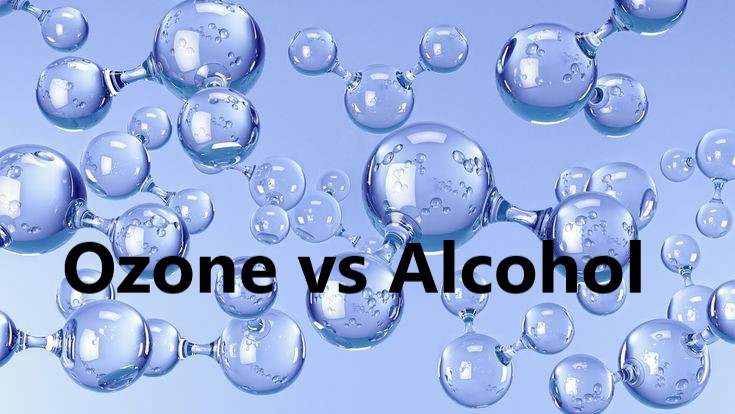One of the most important things we can do to protect ourselves and our families from illness is to keep our living spaces clean. But what is the best way to clean? There are many options available, but some are more effective than others. In this article, we will look at how disinfecting air, water and surfaces with ozone compares to disinfecting with other common cleaners, such as alcohol and chlorine.
When it comes to cleaning, one of the most important things to consider is the type of cleaner you are using. Some cleaners are more effective than others. For example, alcohol and chlorine are two of the most popular cleaners on the market. However, they are not the only options available. There is another type of cleaner that is becoming increasingly popular: ozone.
Ozone is a gas formed when oxygen molecules are exposed to high levels of ultraviolet (UV) light. When ozone comes into contact with bacteria, it breaks down the cell walls of the bacteria and kills them.
One of the benefits of using ozone to clean is that it is very effective at killing bacteria. Studies have shown that ozone is more than 99% effective at killing bacteria.
Another benefit of using ozone to clean is that it does not produce harmful chemicals. When you use ozone to clean, no toxic chemicals are left behind. This is in contrast to cleaners like alcohol and chlorine, which can leave harmful chemicals behind.
Finally, ozone is very safe to use. When used properly, it poses no risk to humans or animals.

Alcohol and chlorine common cleaners
There are many ways to disinfect the air, water and surfaces, but two of the most common and effective methods are using alcohol or chlorine. Both of these substances can kill bacteria and viruses, making them ideal for sanitizing purposes. However, there are some key differences between the two that you should be aware of before deciding which one to use.
Alcohol is a powerful disinfectant that can kill many bacteria and viruses. It is also quick-acting, which means it can start working immediately to sanitize an area. However, the alcohol evaporates quickly, so it is ineffective at preventing the spread of germs over time. Additionally, it can be damaging to some surfaces if used too frequently.
Chlorine, on the other hand, is a slower-acting disinfectant, but it is more effective at preventing the spread of germs over time. It is also less likely to damage surfaces than alcohol, making it a better choice for long-term use. However, chlorine can be harsh on the skin and eyes, so it is important to use it with caution.
Drawbacks of alcohol and chlorine for disinfecting air, water and surfaces
Not effective against all types of bacteria and viruses
Alcohol and chlorine are two of the most commonly used disinfectants. However, they are not effective against all types of bacteria and viruses. Alcohol only kills a limited number of bacteria and viruses, and it is ineffective against more resistant organisms such as the flu virus. Chlorine is a stronger disinfectant, but it can also be harmful to humans and animals if used improperly.
Cause skin and eye irritation
When using alcohol and chlorine for disinfection, it is important to take precautions to avoid skin and eye irritation. Alcohol can cause drying and cracking of the skin, while chlorine can cause burning and redness. Therefore, it is important to wear gloves and protective eyewear when using these products. In addition, it is important to ventilate the area well to avoid inhaling fumes.
It can be toxic if inhaled
If you’re using a chlorine-based disinfectant, be sure to ventilate the area well and avoid inhaling the fumes. Chlorine disinfectants can be toxic if inhaled, so it’s important to take precautions.
Similarly, alcohol-based disinfectants can also be toxic if inhaled. Be sure to use them in a well-ventilated area and avoid inhaling the fumes. If you have any concerns, consult a medical professional before using these products.
Corrosive and damaged surfaces
Alcohol and chlorine disinfectants are corrosive and damage surfaces. They should be used with caution on surfaces that they may hurt. These substances should not be used in food preparation areas, as they can contaminate food and lead to poisoning.
Requires careful handling and storage
When using alcohol and chlorine disinfectants, it is important to handle and store them carefully. Alcohols are flammable liquids, so they should be stored in a cool, dry place away from any heat or open flame. Chlorine disinfectants can be corrosive, so it is important to keep them in a well-ventilated area away from metal surfaces. Both alcohol and chlorine disinfectants should be used in well-ventilated areas to avoid inhaling fumes.
Produce harmful by-products
According to a new study, mixing alcohol and chlorine disinfectant can produce harmful by-products that may harm human health.
The study, conducted by researchers at the University of Florida, found that when ethanol and chloroform are mixed, they create two new compounds: chloroformaldehyde and dichloroacetaldehyde. Both of these new compounds are classified as “probable human carcinogens” by the International Agency for Research on Cancer.
Flammable and pose a fire hazard
Alcohol and chlorine disinfectants are both flammable and pose a fire hazard. When using either of these products, keep them away from heat or open flames. Store them in a cool, dry place away from sunlight. Keep them out of reach of children and pets.
If you must use alcohol or chlorine disinfectant, read the label carefully and follow the instructions. Never mix these products. Doing so could create a dangerous chemical reaction resulting in a fire or explosion.
Comparative analysis of ozone with other common disinfecting cleaners
Ozone disinfecting is a process that uses ozone gas to kill microorganisms. Ozone is a highly reactive form of oxygen produced naturally in the upper atmosphere. When ozone comes into contact with bacteria, viruses, or other microorganisms, it damages their cell walls and kills them.
Compared to other common cleaners, ozonated water is a more effective disinfectant. A study published in the journal Water Research found that ozone was more effective than chlorine at killing E. coli, a common type of bacteria that can cause illness. In addition, the study found that ozone was more effective than chlorine at preventing the growth of biofilms, which are colonies of microorganisms that can form on surfaces and lead to infections.
Ozonated water is also more effective than chlorine at removing organic matter, such as dirt and sweat, from surfaces. This is because ozone gas breaks down organic matter into simpler molecules that are easier to remove.
Compared to other disinfectants, ozonated water has several advantages. For example, Ozonated water is more effective at killing microorganisms, removing organic matter, and preventing the growth of biofilms. In addition, ozonated water is safe to use around children and pets and does not produce harmful by-products.
If you are looking for a more effective way to clean and disinfect your home or office, consider using ozonated water. Ozonation is a safe and effective way to kill microorganisms and remove dirt and organic matter from surfaces.


